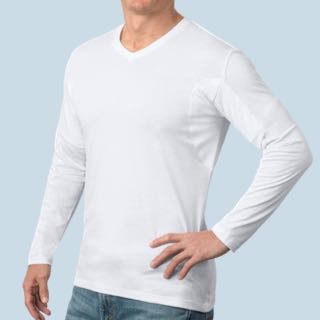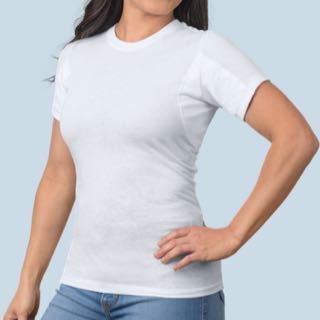Deodorant Not Working Anymore? 11 Reasons Why
Are you wondering why your deodorant isn’t working as well as it used to? It's a common frustration, and numerous factors causing this problem may surprise you.
In this blog, we'll delve into the reasons why your deodorant may not be as effective as before. Additionally, we'll offer practical solutions to help you maintain a fresh and confident feeling throughout the day.
1. YOU'RE USING THE WRONG PRODUCT
Many people use the terms “deodorant” and “antiperspirant” interchangeably. But guess what? Deodorants and antiperspirants are not the same thing.
Deodorants primarily target odor, whereas antiperspirants focus on reducing sweat and address odor concerns to some degree. While most antiperspirants have deodorant properties (technically, antiperspirant deodorants), not all deodorants are antiperspirants.
DEODORANTS MASK ODOR
ANTIPERSPIRANTS BATTLE SWEAT
TRY THIS: If you only apply deodorant, you're only treating the odor, not the sweat itself. If you’re experiencing extra sweaty pits, check the label to ensure you’re using an antiperspirant, not just a deodorant. Choose an unscented version if you want an antiperspirant without fragrance.
2. YOUR DEODORANT ISN’T SUFFICIENT FOR YOUR NEEDS
If you're using antiperspirant, check the ingredients. Your product’s concentration of aluminum chloride (the main sweat-stopping ingredient) may be too low to do the job. You may want to up the ante if yours has a concentration under 20 percent.
TRY THIS: If you're extra sweaty, you may need a clinical or prescription-strength antiperspirant. However, don’t take the words “extra strength,” “clinical strength,” or “prescription strength” at face value. Some brands offer “clinical antiperspirant” that contains only one percent more aluminum chloride than regular-strength antiperspirant.
Prescription antiperspirants have a higher percentage of aluminum chloride than their drugstore counterparts. They also contain aluminum chloride hexahydrate, a different, stronger aluminum compound than over-the-counter options.
3. YOU HAVE HYPERHIDROSIS
Do you sweat excessively for no reason? If you do, you may have hyperhidrosis, a medical condition that affects around 5% of the population. People with hyperhidrosis often sweat excessively in situations unrelated to heat or exercise, causing social anxiety, discomfort and embarrassment.
While hyperhidrosis can affect different body parts, those with axillary hyperhidrosis have overactive nerves that specifically trigger glands in the underarms.
TRY THIS: If you suspect that you have hyperhidrosis, consult with your doctor for a thorough evaluation. There is currently no known cure for hyperhidrosis. However, the following treatments are often used to manage it and reduce its impact on your daily life:
- Oral medications. Doctors often recommend prescription medications for severe cases of hyperhidrosis. Each has its own set of benefits and considerations.
- Topical medications. Numerous topical treatments are effective for managing excessive underarm sweating. These include topical anticholinergics, boric acid, 2-5% tannic acid solutions, resorcinol, and potassium permanganate. Qbrexza, an FDA-approved prescription medication, is often recommended for axillary hyperhidrosis to slow sweat gland activation. Consult your healthcare provider to determine if Qbrexza is suitable for your needs.
- Botox. Many people with axillary hyperhidrosis have sought Botox as an alternative treatment for excessive underarm sweat. Botox can be costly and is only covered by insurance in select cases.
- miraDry. Also known as microwave thermolysis, is a non-surgical approach for treating axillary hyperhidrosis. It utilizes microwave technology to target and destroy sweat glands in the underarm area, effectively ending excessive sweating.
Read more: Hyperhidrosis Treatment for Armpits: Full List of Solutions
4. YOU’RE WEARING THE WRONG CLOTHES
Dressing in layers helps you adjust your body temperature, enabling you to comfortably keep excessive sweating to a minimum.
TRY THIS: Fill your wardrobe with sweat proof clothing and natural materials that absorb moisture, like cotton, linen or rayon from bamboo. Avoid tight-fitting clothing made of synthetic, water-resistant fibers like polyester, rayon or lycra-cotton blends.
The Thompson Tee Sweat Proof Undershirt stands out as a top-notch sweat-resistant garment. Crafted from 100% cotton and natural materials, this innovative undershirt is designed for comfortable wear beneath your everyday clothing. It effectively manages underarm sweat and helps prevent unsightly pit stains.
5. YOU'RE APPLYING DEODORANT IN THE MORNING
Deodorants and antiperspirants need time to penetrate your pores and work effectively. If you're applying deodorant in the morning right before you get dressed and head out the door, you're not doing yourself any favors.
TRY THIS: Applying deodorant properly helps you stop armpit sweat and odor from ruining your day. Deodorant and antiperspirant will work better when you apply them at night.
Applying antiperspirant at night gives your sweat glands more time to absorb the compounds. When your body cools down at night you sweat less, giving the product a fighting chance to absorb into your skin and block your sweat glands.
Once the antiperspirant has penetrated your armpit pores, you don't have to reapply in the morning – even if you shower. Because the aluminum isn’t just sitting on the surface of your skin, water won’t wash it off.
However, showering after putting on antiperspirant at night reduces its effectiveness. Allow some time for the antiperspirant or deodorant to work its magic.
6. YOU'RE APPLYING DEODORANT ON WET SKIN
If you're putting on deodorant or antiperspirant right after you shower, your application is less effective.
Aluminum, the active ingredient in antiperspirant, can't penetrate wet skin. Also, when you wake up, your body immediately starts sweating (whether you realize it or not).
Putting on antiperspirant while you’re already sweating or right out of the shower won’t do much to stop your sweat. And constant trips to the bathroom to slather on more deodorant won’t help, either. The aluminum can’t pass through sweat or water to clog your sweat ducts, rendering antiperspirant useless.
TRY THIS: Antiperspirant is stronger than standard deodorant and can irritate sensitive skin. Don’t use the product immediately after shaving or on broken or irritated skin.
If you shower at night, ensure your pits are completely dry before applying antiperspirant or deodorant.
PRO TIP: There's no need to over-apply your deodorant or antiperspirant — a few swipes will do the job. Too much product can mess with your underarm bacteria and leave an annoying residue on your clothing. There’s no need to re-apply in the middle of the day, either.
7. YOUR HYGIENE NEEDS AN OVERHAUL
We hate to bring this up, but when did you last shower? Your deodorant’s effectiveness can decline due to inadequate personal hygiene practices, leading to excess odor-causing bacteria.
Sometimes, people use even more deodorants, perfumes and body sprays to mask unpleasant odors, making matters worse. Excessive product buildup in the underarm area can also reduce deodorant effectiveness.
TRY THIS: First, bathe regularly, using antibacterial soap in your underarm areas. Bathing keeps the bacteria that cause body odor at bay while keeping you feeling fresh and clean. Consider taking a break from applying products to your armpits for three to four days to allow your natural body state to reset.
After this break, resume using deodorant at night and on dry skin (as described above). If it continues to be ineffective, it might be worthwhile to explore alternative brands.
8. YOU’VE STOPPED USING ANTIPERSPIRANT
Remember when we said deodorant and antiperspirant are two different things? Switching to natural alternatives may lead to increased sweating as your body adapts to the absence of active antiperspirant ingredients.
TRY THIS: Armpit detox to the rescue! An armpit detox is a way to help your body transition to natural deodorant usage more efficiently. During an armpit detox, you'll clear clogged pores from prior years of antiperspirant use.
Long-term use of antiperspirants changes your body’s bacteria, so you stink more once you stop using them. You may also experience rashes and excessive odor while transitioning, which is normal.
9. YOU’RE STRESSED OUT
Stress sweat is no laughing matter. It’s a natural response to nerve-wracking or tense situations that can lead to noticeable body odor and sweat marks. Unlike regular sweating from exercise or hot weather, stress sweat is triggered by the brain activating the fight-or-flight response.
Stress sweat can result in visible sweat marks and a distinctive odor. Consequences of stress sweat can include social anxiety, negative perceptions by others, and potential impacts on professional advancement.
TRY THIS: To manage stress sweat, try one or more of the following strategies:
- Wear a sweat proof undershirt or anti odor T-Shirt
- Stay hydrated
- Practice deep breathing
- Engage in progressive muscle relaxation
- Listen to soothing music.
10. YOUR LIFESTYLE CHOICES ARE MAKING YOU SWEAT MORE
Are you committing any of the four deadly sweat sins? If your deodorant has stopped working and you’re doing any of the following regularly, you may want to consider making some changes.
- Drinking alcohol widens blood vessels in the skin, raising skin temperature. When your brain tells sweat glands to cool down, you sweat more.
- Smoking cigarettes. Inhaling nicotine causes your body to release the chemical acetylcholine. Acetylcholine raises your heart rate, blood pressure and body temperature and triggers your sweat glands. Quitting smoking also causes excessive sweating temporarily; however, this side effect will eventually disappear.
- Drinking caffeine. Caffeine activates the central nervous system, leading to sweat gland stimulation. Hot caffeinated drinks can be especially problematic for heavy sweaters, so opt for iced coffee or cold caffeine options instead.
- Eating hot or spicy foods. Consuming spicy foods like hot peppers or spicy sauces can trigger excessive sweating. This happens because spicy foods activate nerve receptors sensitive to heat, fooling your nervous system into perceiving elevated body temperature.
TRY THIS: If you’re unwilling to eliminate any of the above, just be aware of these choices' effect on your sweat level. Deciding to cut back on one or more may help your deodorant’s performance.
11. MEDICINE IS MAKING YOU SWEAT MORE
Certain prescription medications, including antidepressants, have the potential to induce sweating as a side effect. Using some over-the-counter (OTC) products may also contribute to your deodorant not pulling its weight. Here’s a list of medications that may induce sweating:
- Antidepressants: Selective serotonin reuptake inhibitors (SSRs), like escitalopram (Lexapro), sertraline (Zoloft), paroxetine (Paxil), bupropion (Wellbutrin XR, Wellbutrin SR) and venlafaxine (Effexor XR)
- Corticosteroids: Prednisone (Rayos, Prednisone Intensol)
- Triptans: Sumatriptan (Imitrex), rizatriptan (Maxalt), and frovatriptan (Frova)
- NSAID pain relievers: Ibuprofen (Advil, Motrin) and aspirin
- Opioids: Morphine (MS Contin) and oxycodone (OxyContin), Tramadol (Qdolo, ConZip)
- Diabetes medications: Glyburide (Diabeta, Glynase) and glipizide (Glucotrol XL)
- Certain asthma inhalers: Albuterol (Ventolin, Proventil, ProAir) and levalbuterol (Xopenex). Some combination inhalers also contain beta-agonists, including fluticasone/salmeterol (Advair) and ipratropium/albuterol (Combivent)
- Proton pump inhibitors: Omeprazole (Prilosec) and lansoprazole (Prevacid)
- Viagra (sildenafil)
- Breast cancer medications: Tamoxifen (Soltamox), anastrozole (Arimidex), exemestane (Aromasin), and letrozole (Femara)
- Leuprolide: (Lupron Depot, Eligard, Camcevi)
TRY THIS: If excessive sweating due to medication starts interfering with your quality of life, talk to your healthcare provider. They may recommend adjusting your dosage or trying a different drug.
Make Your Deodorant Work Even Better With Thompson Tee
Want to get the most mileage out of your antiperspirant or deodorant? Pair your favorite product with a Thompson Tee sweat proof or anti odor undershirt!
Our undershirts are 100% guaranteed to block sweat marks and odor and prevent yellow armpit stains. A patented Hydro-Shield® underarm barrier blocks wetness and odor and protects your outerwear, keeping you fresh and confident all day.
Try a Thompson Tee risk-free today!


